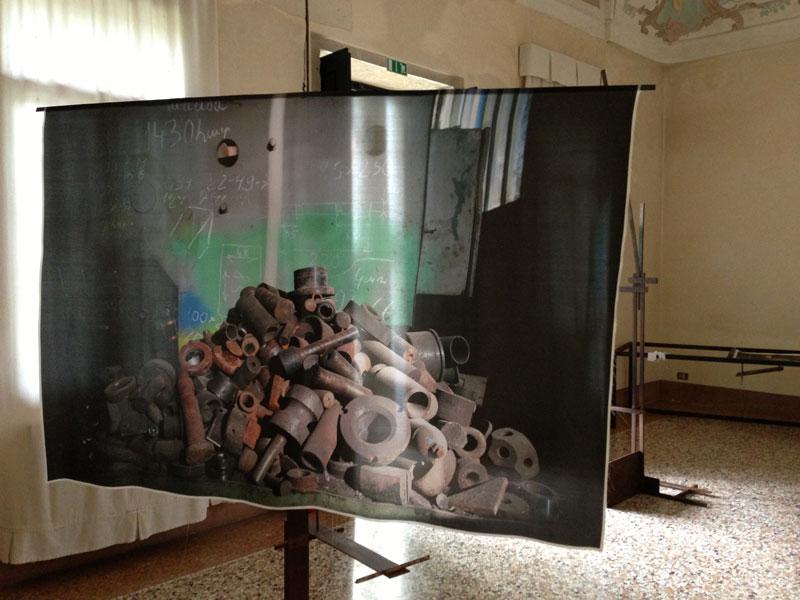What happens when a Canadian moviemaking expert decides to work with still life and sculpture?
An answer is currently on view at the Venice Biennale in Norayr Kasper’s installation Steel-Lives, Still-Life, an official collateral event of the Biennale.
Given that Kasper acted as cinematographer on Atom Egoyan’s films Calendar and Sarabande, and lensed the Canadian TV miniseries Trudeau and St. Urbain’s Horseman, he is best known at present for his cinematic work.
But Kasper, a graduate of Concordia University, hopes that won’t be the case for long.
Steel-Lives, Still-Life consists of five elements; in each one, silk-printed photos relating the post-Soviet Armenian metal industry are supported by rusted steel armatures—or, as Kasper calls them, “easels.”
In four of these elements, the photos hang vertically, their fabric rippling and moving as breezes enter through the doorway of the Centro Studi e Documentazione della Cultura Armena in the centuries-old Palazzo Zenobio. Because each silk print is translucent, the images can be read from both sides of the print, evoking a sense of film projection.
In the fifth element, a table-like sculpture acts like the spine of a book, with a stack of large fabric-printed photos bolted to it along its right-hand edge. Visitors are welcome to flip through these images at their own pace.
Tensions between light and heavy, and between flexible and static, underscore the exhibition—as does Kasper’s concern with Armenia’s difficulty negotiating such tensions following the fall of the Soviet Union.
Many of the photos show abandoned factories; some depict former workers at the plants; and others document remnants of the Communist industrial dream as manifested in decaying worker posters and yellowed Lenin portraits.
“This is about a sense of loss,” Kasper said last week during an interview at the installation. “These people woke up one day in 1989 or so and they were told they were no longer needed on this planet in terms of work, technology, progress…. it is a very painful situation.”
The project is also personal to a certain extent, as the roots of Kasper’s family are in Armenia. He shot the pictures over six years of visits.
The artist also has a personal connection to Venice: he grew up and studied architecture in the island city.
“For me, Venice is the perfect place for this work; it is between east and west,” said Kasper. Though the photos were shot in Armenia, they were printed in Montreal, and the armatures were welded in Murano.
Steel-Lives, Still-Life is the culmination of many things: Kasper’s intimate connections to Armenia, Italy and Canada; his long experience in image-based creation; and his early interests in architecture.
However, in a departure from typical cinematographic and curatorial practice, Kasper used natural light to shoot all the photos, and he only allows natural light to illuminate the installation as well.
In this way, he says, “the building itself becomes an easel of this place.”
Steel-Lives, Still-Life opened yesterday and continues to November 24 at the Centro Studi e Documentazione della Cultura Armena in Venice.









